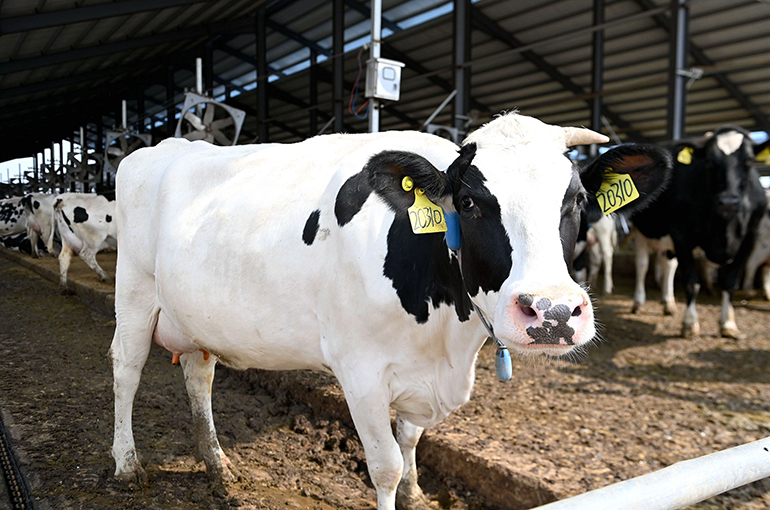 Chinese Dairy Farmers Face Dark Times as Supply Glut Shows No Sign of Abating
Chinese Dairy Farmers Face Dark Times as Supply Glut Shows No Sign of Abating(Yicai Global) July 19 -- China’s dairy farming industry is experiencing its darkest period in over 15 years as an oversupply of raw milk means that many are running at a loss and there appears to be no end in sight to the bleak situation.
Over 60 percent of China’s dairy farms are operating at a deficit and some of the smaller ones are even having to slaughter their cattle to reduce their losses, Yicai Global learnt at an industry forum held today.
This year there is likely to be more than 1.1 million tons of excess raw milk and this is keeping prices depressed, Li Shengli, chief scientist at the semi-official National Dairy Industry and Technology System, said at the forum.
The average price of raw milk in 10 major milk producing regions, including Inner Mongolia Autonomous Region and Hebei province, was CNY3.77 (USD0.52) per kilogram in the last week of June, according to the latest data from the Ministry of Agriculture and Rural Affairs. This was a 5 percent drop from March and a 13.5 percent dive from the high of CNY4.36 per kilogram in August 2021.
The oversupply is forcing milk processors to turn the excess raw milk into milk powder for storage, Li said. Between 4,000 and 5,000 tons of fresh milk is being turned into milk powder each day, he added.
This is still an improvement from the worst month of February, when processors were turning 17 percent of the fresh milk they purchased from dairy farmers into milk powder every day, amounting to 10,800 tons, Li said.
The high cost of animal fodder, which accounts for around 65 percent to 70 percent of farmers’ costs, is also putting the entire sector under pressure.
Survival of the Fittest
Only the biggest can survive. It costs large ranches with no debts around CNY3.80 (USD0.50) to produce one kilogram of milk, said Song Huiting, chair of Jiangsu Jiahui Biotechnology. Given the current price of milk, only the top 20 percent to 30 percent of dairy farms that have high production volumes are able to stay afloat.
"My farm is now slaughtering cows that are less productive and selling the meat to cover part of operating losses," said Xu Gang, who runs a large ranch in Hebei province. “Trying to survive” is the most important thing, he added.
As a result, the size of herds at dairy ranches is beginning to shrink. In May, the average number of cows in dairy farms that have business relations with the National Dairy Industry and Technology System dropped by 3.4 percent from the same period of last year, Li said. And for smaller dairy farms with fewer than 3,000 cows, the herds contraction rate fell by 6.2 percent.
Hot weather and drought are keeping the price of grain grown in the summer high. And the next few months are the time when ranches fill their silos. Those with cash flow difficulties will be forced to close down, Li said.
Ups and Downs
China’s dairy sector is now experiencing its most difficult period since 2008, said Gao Hongbin, honorary chairman of the Dairy Association of China.
However, the supply glut can also reshape China’s dairy sector as it enters an era of “survival of the fittest,” Gao said. There are now only 587 dairy companies above a designated size in the country and the market is likely to become more centralized in the future.
China’s dairy sector has always experienced cyclical ups and downs. From 2014 to 2018, half of the country’s ranches suffered losses, resulting in them ‘pouring away milk and slaughtering cattle.” Dairy herds slumped to 4.7 million in 2019 from 8.5 million in 2014.
After 2018, the price of fresh milk started to rise, and dairy farmers began to expand production capacity, leading once again to overcapacity.
Editors: Tang Shihua, Kim Taylor